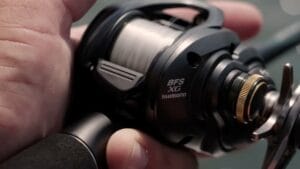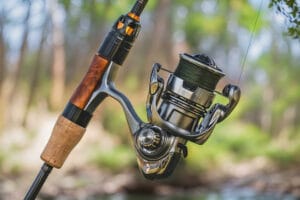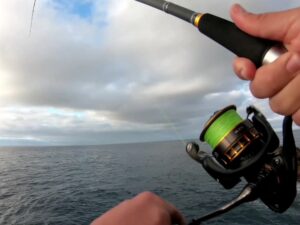How To Fish For Bass with Wild Shiners
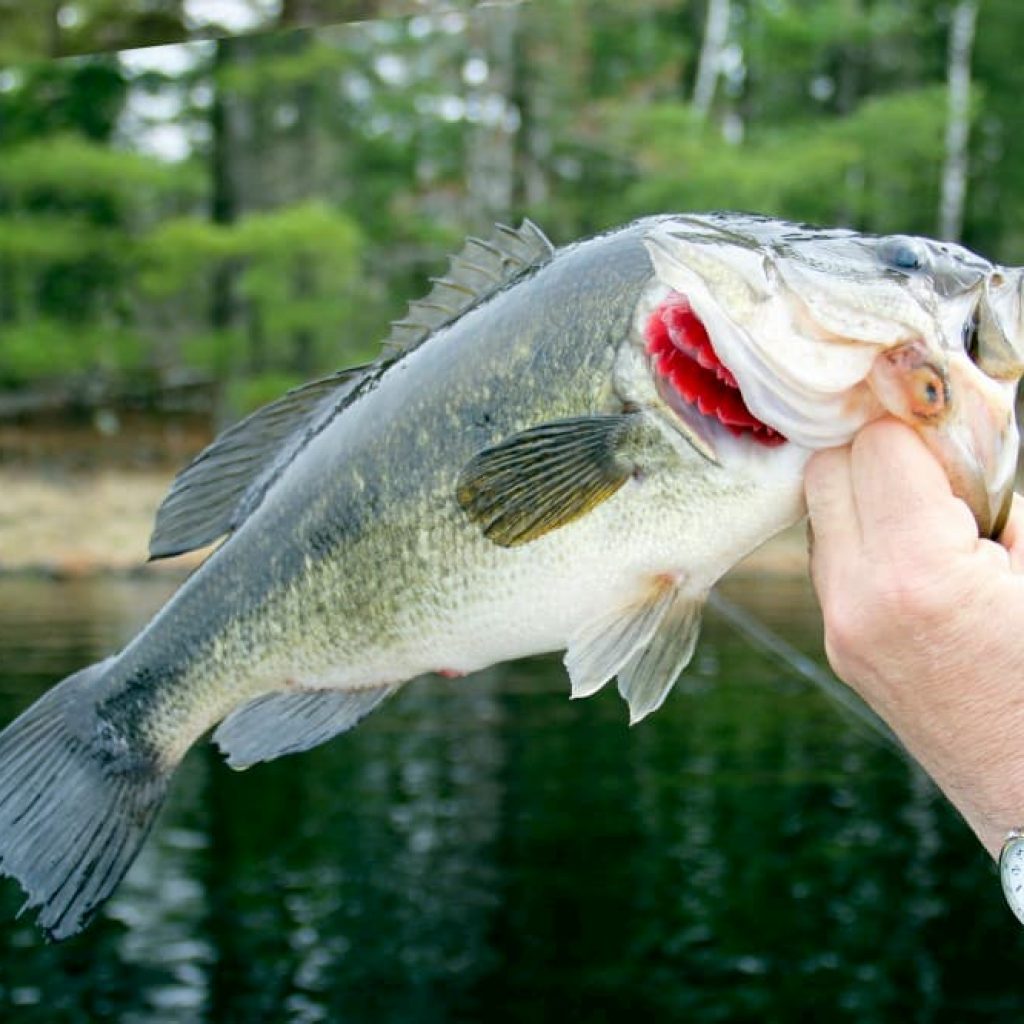
Looking to catch that trophy bass? If you’re not having any success with any of our recommended fishing lures, fishing with live shiners is one of the best ways to catch a trophy bass.
Fishing with live bait, like shiners, is a very old technique that’s been around for about as long as fishing has. Fish love shiners because they are an easy meal.
Sometimes, it’s the little things that bass are attracted to that make them so effective at reeling in large fish. To catch a trophy bass, you need to do everything you can to fool the fish into thinking that your bait is real and it won’t get any more real than a live fish on your hook.
Get Your Shiners
The first step before you can fish with shiners will be getting them.
It’s important to plan ahead with this step and make sure you contact your local bait shop a couple of weeks ahead of your scheduled fishing day. This way they have plenty of time to get the wild shiners in and be available for you.
It can be very difficult getting wild shiners at the last minute.
It’s important to know that there are multiple different types of shiners. The most common that you’ll see at the bait shops are wild shiners and domestic shiners.
Wild shiners will work the best when fishing for bass, however, domestic shiners can still work.
When purchasing shiners, make sure they’ve been living in well-aerated water. This will help guarantee their longevity.
Once you’ve purchased your shiners, make sure you place them in an aerated tank to hold. You will want a portable aerated bait tank to keep your shiners alive and active while out on the boat.
Best Portable Bait Tanks
If you’re looking for a good portable bait tank, we recommend the following:
Frabill Magnum Bait Station
The Frabill Magnum Bait Station is available in 3 different sizes: 13 quart, 19 quart, and 30 quart. Depending on the size you select, it will include 1 or 2 DC or battery powered aerators.
The Magnum bait station works great at keeping bait alive. It’s very well made. Just note, it is quite heavy, especially when filled up with water.
Overall, for keeping shiners alive while out on the boat, the Magnum is the best portable option we’ve found.
Flambeau Outdoors Bait Butler
If you’re looking for a less expensive option the Flambeau Outdoors 6092BB Bait Butler may be just the right solution for you.
It includes the lid, aerator, and bait retrieval system, however, it doesn’t come with the bucket. If you’re like us, we have plenty of 5-gallon buckets around, but not everyone does.
The aerator has a 40 hour runtime on 2 D sized batteries.
Overall, the Bait Butler works pretty well for keeping live bait alive. It doesn’t have the stability of the Magnum Bait Station, but for almost half the price it’s the more economical option.
Where To Purchase Shiners Online
If you’re having a hard time sourcing your shiners locally, you can also try purchasing them online. While we do think it’s best to purchase them from a local bait shop, sometimes that’s not always feasible.
While wild shiners will be more active in the water, farm raised shiners can still work great for catching a trophy sized bass. Generally, they’re also going to be more economically priced as well.
I.F. Anderson Farms Golden Shiners
We currently recommend I.F. Anderson Farms for online purchases. They raise over 1 billion shiners every year so they always have a supply available.
Their shiners are available in sizes from 1.5″ up to 4″.
They provide step-by-step instructions on the best way to keep your shiners alive once they arrive as well as a live arrival guarantee.
If you can’t find shiners locally, I.F. Anderson Farms is your best option.
How to hook your wild shiner
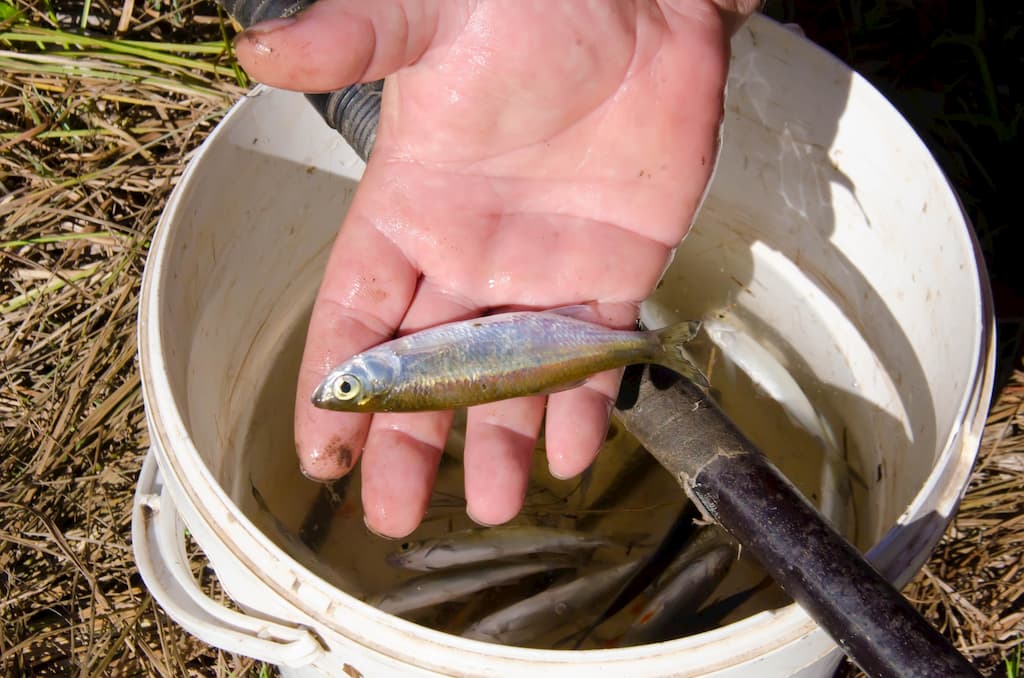
Now you will want to hook your bait.
To be successful use a hook with a wide gap. A wire circle hook is by far the best with a shiner or some other type of baitfish.
Circle hooks are good because it is hard for them to get caught on anything thus allowing them to swim freely.
Never use offset-eye hooks; they can cause problems.
The best places to hook your bait are beneath the dorsal fin, through the tail, before the anal fin, or through the lips.
There are advantages and disadvantages for each method, but each method has its own reasons for different situations.
Lip Hooking
The most widely used procedure involves hooking the shiner through the lips. It works well because the lip hook provides a more solid positioning of the hook.
Lip hooking also reduces the swimming action of the bait and keeps the bait in one place when needed.
The only problem with hooking a shiner through the lips is that sometimes it’s too easy to pull the hook out of the shiner. This can be a real problem when a big bass starts running off with the bait.
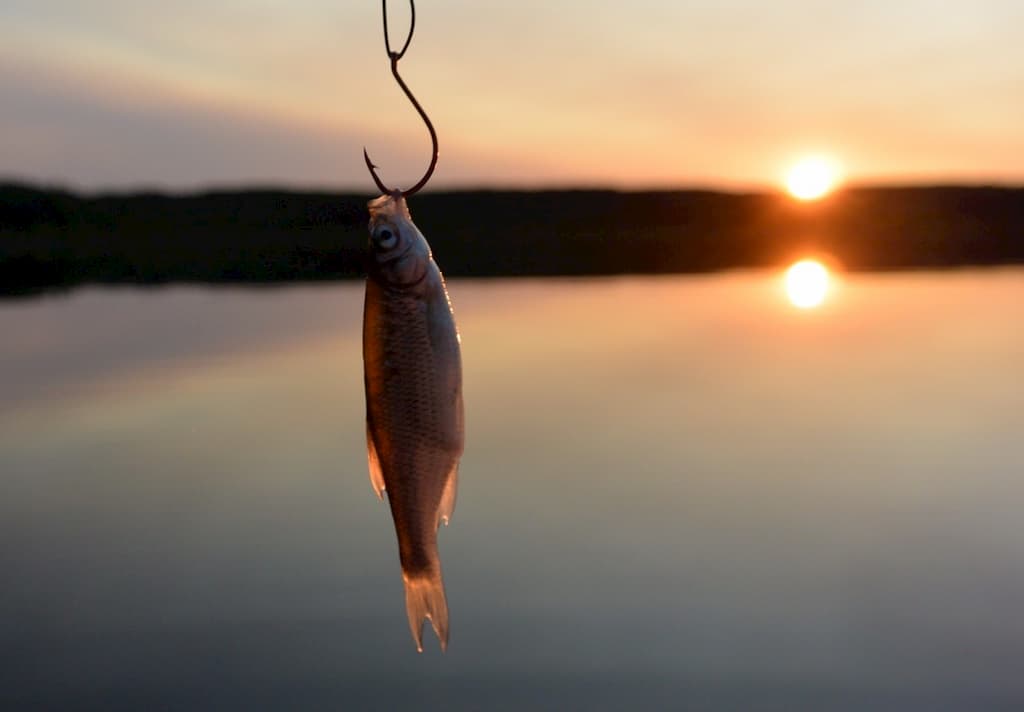
Air Hole
Placing your hook through the air holes gives a better hold to the hook and keeps it in place.
Bass typically grab shiners by the head first, so air hole hooking and lip hooking have the highest hook set rates.
Hooking the shiner slightly behind the pair of air holes allows a more solid placement of the hook and a slight bit of action out of the bait.
The main problem with this method is that sometimes it’s too easy to pull the hook out of the shiner.
Dorsal Fin
Hooking the shiner before its dorsal fin works well because when the angler sets the hook, the hook goes through the shiner’s body.
This hook is positioned just behind the two air holes in the meaty part of the bait with the point of the hook on its outside edge.
This gives a good hold for the hook.
If the shiner is hooked this way, it will face away from you and will swim faster if tension is applied. The shiner may even come toward the surface and flail about.
Anal Fin
Hooking the shiner over the anal fin works well in deep water around cover and vegetation but can be hard to keep in place.
To hook the shiner properly, run the hook through the meaty part in the back of the shiner just below the dorsal fin.
The exact placement above the anal fin is not as important as making sure where it’s placed allows you to remove the hook quickly and set it on the bass.
This is a more natural look and gives the shiner better swimming action. The shiner will start right for your rod tip once it’s been hooked this way.
Hooking the shiner through the tail makes him swim more but lowers the hook-up ratio.
Sometimes you want the bait to swim, sometimes you don’t.
The advantage of tail hooking is that it allows the shiner to swim, but the disadvantage is that hook-up success is greatly reduced.
When to use each method is a judgment call that anglers make.
There is no one-size-fits-all method for hooking shiners. A good angler can determine the best way to hook each shiner by observing its behavior and taking into account the current, cover, depth, type of baitfish, etc.
Also, the angler must judge how rough the water is and what kind of hook the shiner is using.
Gamakatsu Shiner Hook Straight Eye
When fishing with shiners you want to make sure you have a good quality hook to hold your shiners on the line.
Gamakatsu’s shiner hook is one of our favorites. It’s strong and it comes very sharp. It’s got a great shape to it and works with just about any of the shiner techniques listed above.
If you don’t already have good shiner hooks, we recommend you check out the Gamakatsu Shiner Hook.
Shiner Fishing Techniques
Now that you know how to hook your shiner, it’s time to learn the different baiting techniques. I
t’s important to realize that not one technique is best and there are many ways to fish for bass with shiners. The technique you use will depend on the type of water you are fishing and what your personal preference is.
For example, you may want to use a shiner with a lip hook, a shiner hooked through the air holes or a shiner with a dorsal fin hook. Each has its advantages and disadvantages.
The main thing to remember is to get your shiner in front of the bass.
The following are some tips on how to do that:
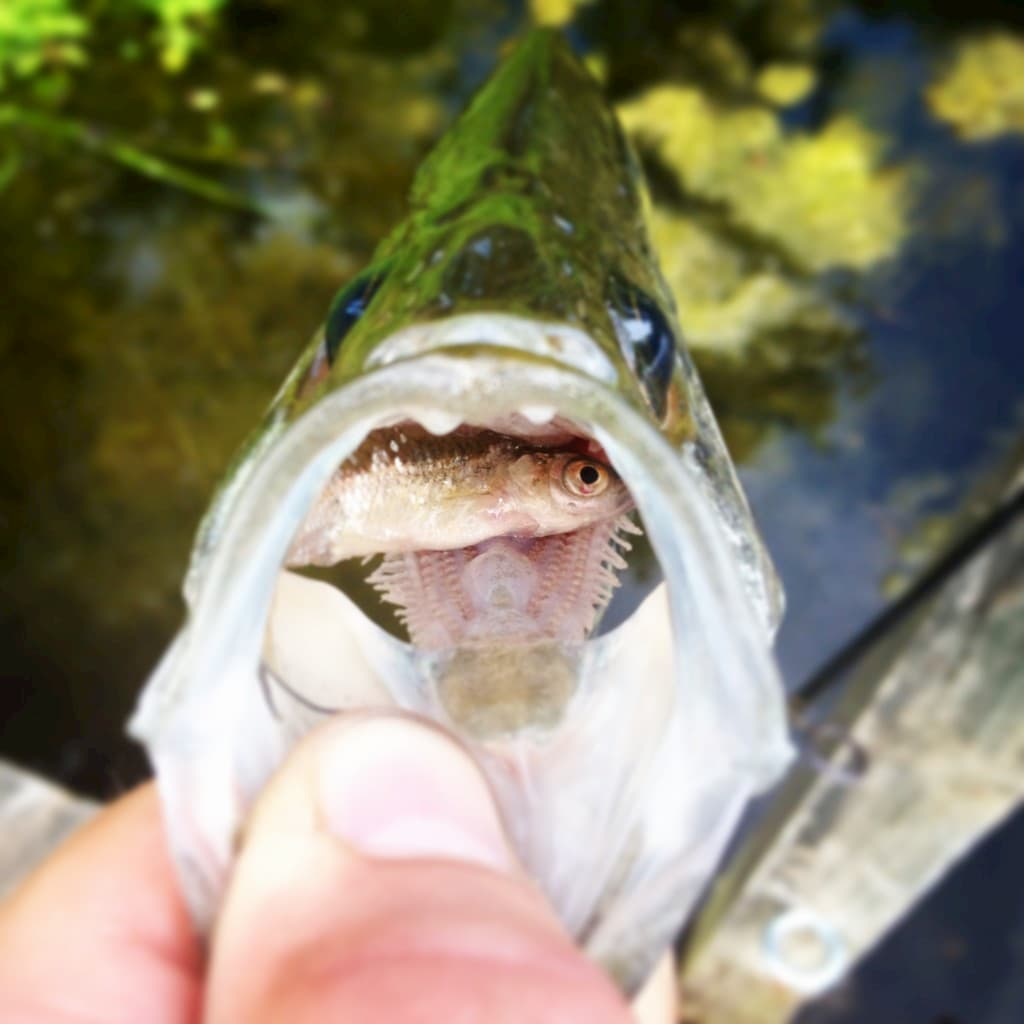
Slow-Trolling
The most common and effective way is slow-trolling your bait while keeping your rod tip low. Keep the rod tip low so the shiner can easily swim up from the bottom of the lake or river.
Sometimes anglers are tempted to hold their rod high because they get excited when they start feeling nibbles, but this is a mistake because it’s hard to keep the bait in one place.
When the bait is swimming around and away from you, the bass can easily take it.
If you are using shiners with the lip hook, then try to keep them swimming by applying tension to your fishing line with your rod. The body of the shiner should be facing away from you.
When you feel the fish take the bait, give your rod tip a quick jerk toward you to set the hook. When the shiner is hooked properly, the bass will shoot off with the bait and you’ll have hooked onto that trophy bass you’ve been dreaming about all season long.
Grass Fishing
Another technique is dragging a shiner over or through a grass bed. The key to this technique is to keep your shiner moving.
Some anglers will drag their shiner along the bottom while others will drag it through the grass. This will give it a more natural look and make it seem more like a wounded baitfish.
The theory behind it is that when the bass are buried in the grass they can’t feed on anything else because it’s hard to get to their prey. They’ll smell the shiner and realize that it’s an easy meal.
Some anglers may be concerned about losing their bait if the grass gets wrapped around their hook. In this case, you can use the right hook to prevent it from getting caught on the grass.
When you feel a big bite, give your rod a quick jerk to set the hook. Then reel in your line quickly before the bass can get away.
Equipment you need to fish with Shiners for Trophy Bass
The right equipment is crucial when fishing with wild shiners. Bass fishermen have crankbait rods, topwater rods, flipping sticks, and so on. Serious wild shiner fishermen have tackle designed specifically for wild shiner fishing.
The first thing you’ll need is the right rod. The ideal rod is between 7ft and 8ft long with a sensitive tip and a heavy butt. This allows you to set the hook and fight the fish without fear of breaking your rod.
To find the right rod, check out the following articles:
You’ll want a strong fishing line with a minimum test of 20 pounds. This will help prevent breaking off the bass when it’s running with the shiner. A fishing line with a great deal of stretch is good for the same reason.
You will also want a strong and sharp shiner hook. A strong hook has less chance of pulling out of the fish’s mouth or the wild shiner’s mouth.
Again, our recommended hook is the Gamakatsu Shiner Hook.
Add a little weight to your line, usually, a split shot or two at the end of the line will do the trick. This is critical if you’re fishing in deep water. Check out the JSHANMEI 42pcs/Box Egg Sinker Weight Kit if you’re in need of sinkers.
You’ll also want a good pair of pliers to remove hooks.
Other important gear parts include a good landing net and a bucket to store extra shiners.
Final Thoughts
As an Amazon Associate I earn from qualifying purchases.
You may also be interested in…





